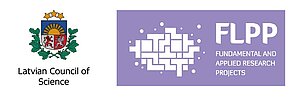BURIAL PRACTICES IN THE LANDSCAPE: PRESENT-DAY LATVIA IN THE IRON AGE (AD 1–1200)

Project No.: lzp-2021/1-0163
Implementation period: 3 January 2022 – 30 December 2024
Project costs: EUR 299 999.70
Principal investigator: Dr. hist. Guntis Zemītis
The project goal is to examine burial practices in the Iron Age of present-day Latvia (AD 1–1200) within a landscape context, a topic hitherto given little attention. In archaeology, landscape is seen as constituted in the intersection of cultural, social and environmental dynamics, as both the medium and the outcome of human activity. In this view, the placement of burial areas, too, is the result of choices made by individuals in a society with regard to the landscape, thus creating a specific mortuary landscape.
The project will use material from Iron Age burial excavations covering different areas and periods. The mortuary landscape of AD 1–1200 will be identified, analysing its principles of establishment and organization, and the its subsequent influence, yielding new knowledge about burial practices and Latvia’s prehistory, and contributing to cultural landscape preservation. There are three main tasks: to analyse the significance of landscape elements and their role in the placement and mutual arrangement of burial sites; to analyse the interaction between burial sites’ internal structure and landscape elements; to analyse the Iron Age mortuary landscape’s influence on later development. The study will apply archaeological methods (field visits; analysis of excavated material, including dating, data correlation, etc.) as well as natural sciences (palaeobotanical) methods. GIS will be used to combine archaeological and environmental data and perform spatial analysis.
Scientific team: Dr. hist. Guntis Zemītis, Dr. archaeol. Valdis Bērziņš, Dr. geol. Normunds Stivriņš, Dr. hist. Antonija Vilcāne; PhD candidates: Inga Doniņa, Aija Ērkšķe, Elīna Guščika; MA student: Ildze Mīlgrāve.
- Navigating the Latvian History of the 20th–21st Century
- Expanding Concept and Methodology for Human Past Studies
- Ethnographer, Society, and Art
- The environment and early farming
- Viking Age in Latvia: an interdisciplinary study
- Burial practices in the landscape
- Skills in synergy, crafts in context
- Dyes and Dyeing
- Magic and Superstition
- Knots in Clay
- Contextualization of Traditional Clothing

 CONFERENCE
CONFERENCE